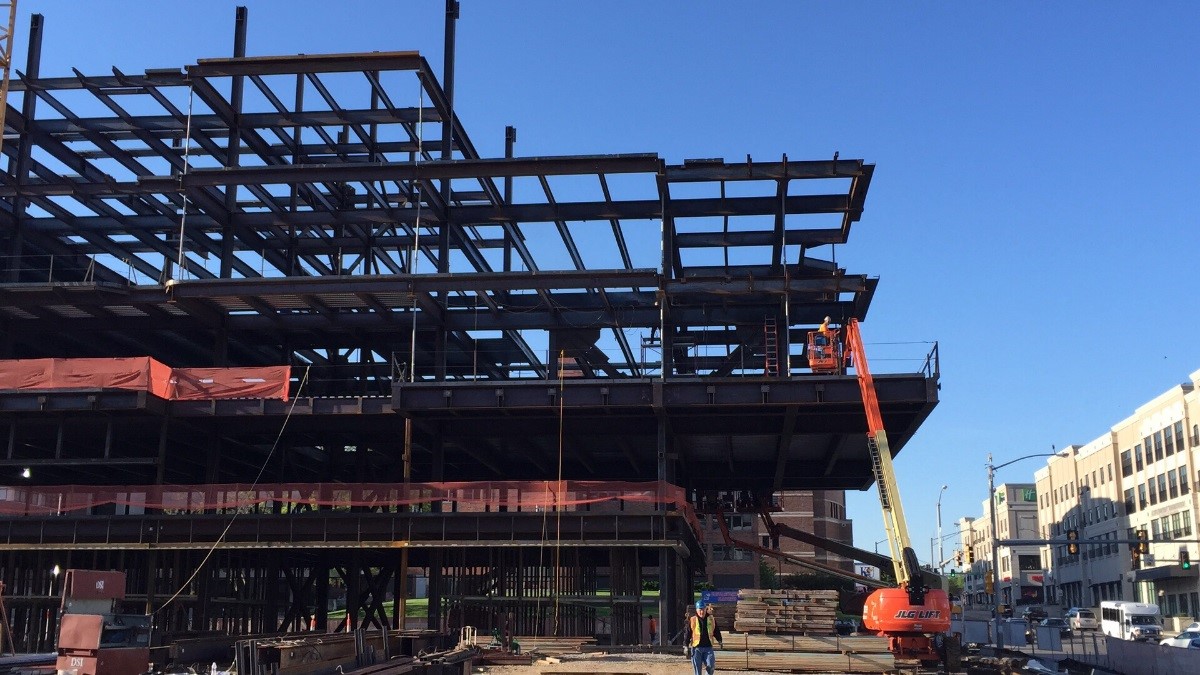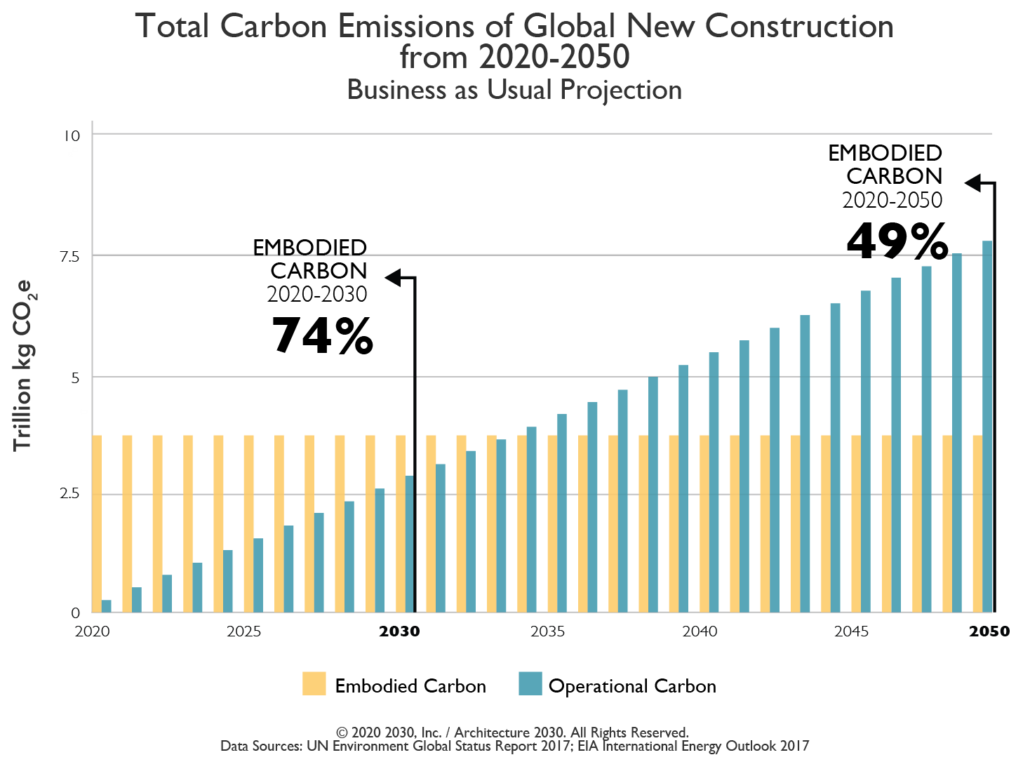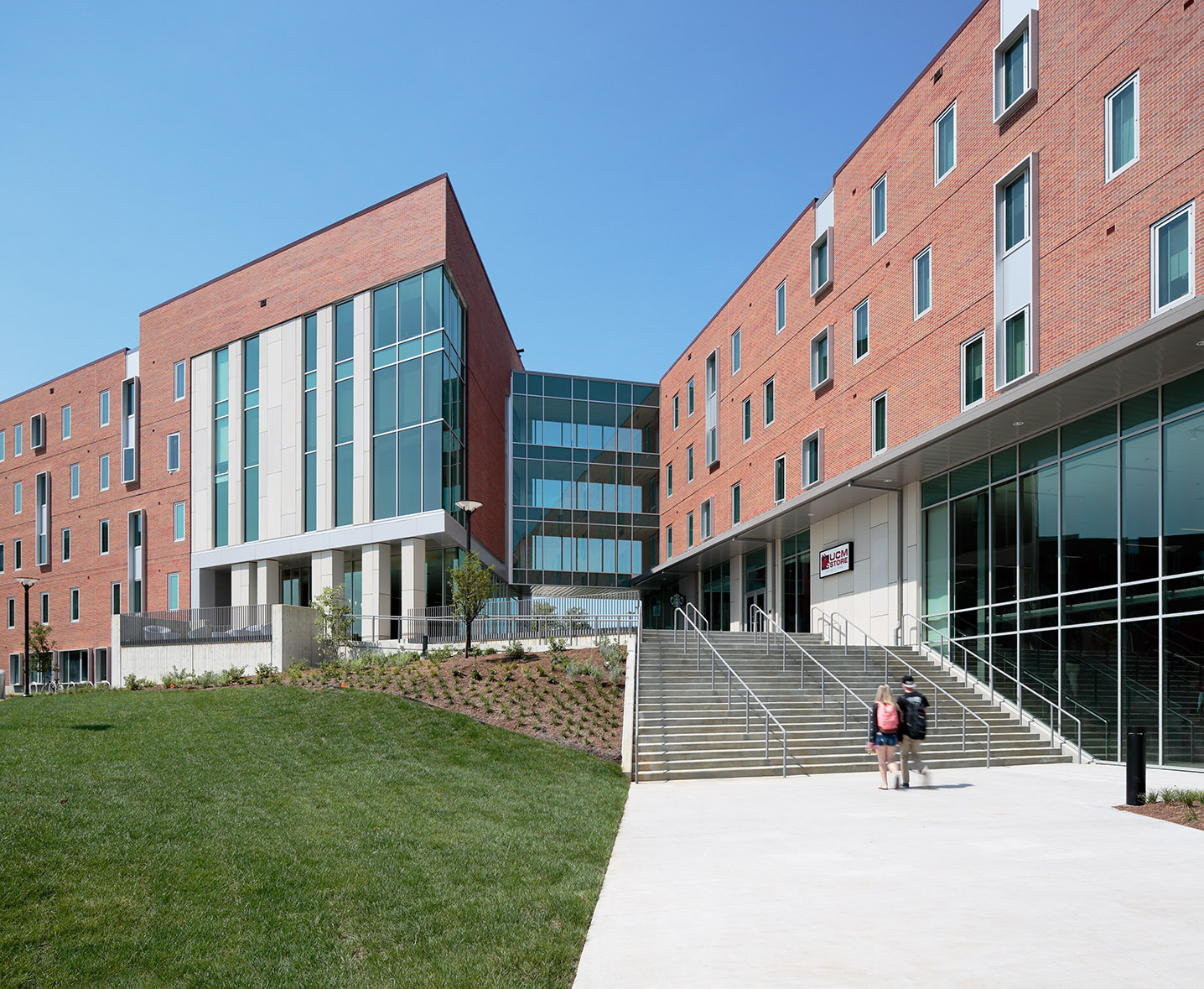What is embodied carbon
And why should I care?

Across the country, sophisticated construction owners and developers are beginning to ask their design and construction teams the following question, “What is the overall carbon impact of my project, and how can we lessen our impact?” National companies like Microsoft and even local developers like Curtin Property Company in Kansas City are designing to carbon budgets that are set at the beginning of a project, alongside a monetary budget.
For many years, sustainable design has focused on reducing the operational carbon impacts of a building – installing energy efficient HVAC systems, harvesting daylight and using water resources efficiently.
As the discussion around global climate change has evolved, sustainability leaders have begun to ask about the physical “embodied carbon” of a particular material or system – e.g., “How much carbon is required to create one ton of fabricated structural steel?” or “How much water is used in creating our carpet?”
The Architecture 2030 initiative has released data showing that embodied carbon represents 74% of total carbon emissions (embodied + operational) from global new construction when looking at the ten-year span from 2020-2030. Extending the time frame out to 2050, embodied carbon still represents 49% of total carbon emissions.

Of the embodied carbon impacts, it is estimated that roughly 80% are attributed to building structure and enclosure – the steel, concrete, masonry and wood in your building.
Why are developers putting a renewed focus on carbon?
Beyond demonstrating goodwill to the community and being a responsible steward of resources, there is a growing body of legislation requiring this type of analysis for a proposed development – requiring project teams to “buy clean.”
- Buy Clean CA, 2017 – Requires contractors bidding on state-funded projects to disclose Greenhouse Gas (GHG) Data of industrial materials.
- Marin County Low Carbon Concrete Code, 2019 – First of its kind and widely viewed as a template for the future. Requires project teams to evaluate the embodied carbon of concrete mixes during design. Portland and NYC have proposed similar ordinances.
- Vancouver, BC, Zero Emissions Building (ZEB) Plan, 2016 – Requires all new city buildings built to the Net Zero standard or equivalent by 2030.
- Proposed Federal Buy Clean legislation, 2020 – House Energy and Commerce Committee members released draft language of the Climate Leadership and Environmental Action for our Nation’s (CLEAN) Future Act Bill.
Reducing material use is a key strategy to reducing embodied carbon
But a holistic discussion surrounding construction techniques and even end-of-life impacts should be the goal. Your design-build team should be prepared to set a baseline carbon budget on a project and talk through options for percentage improvements. Some options:
- Is a new ground-up building required?
- Can an existing building be renovated or added onto in order to achieve the same goal?
- If new construction is required, is the team able to provide a Whole Building Life-Cycle Analysis (WBLCA) to quantify the carbon footprint of an optimized design?
- Can we modularize the project to create less of an impact in the field?
- Can we design for deconstruction at end of life?
Finding the sweet spot of sustainability, economy and design can be achieved through early involvement of all parties – ownership, designers, builders and trade partners. Traditional pillars of structural design – robustness and redundancy – can still be achieved. Engineers and builders should design their structure to work hard in the areas it needs to work hard – and be efficient elsewhere.
Plan for your project’s carbon impact with McCownGordon Construction
McCownGordon’s Engineering Services department follows the constant changes around embodied carbon, carbon budgets and the legislation around it. Our team understands the complexities of sustainability. Before you start your next project, contact our team to discuss your sustainability goals and how we can help you.
We have three regional offices around the Midwest—Kansas City, Manhattan and Wichita. Call us at 888-304-4929 or use our free online quote tool to start building today.
Follow Us
McCownGordon strives to be a thought leader in our industry and provide continuous insight and updates to our clients to ensure we're keeping up with the latest technology and safety standards and regulations.
Sign Up



